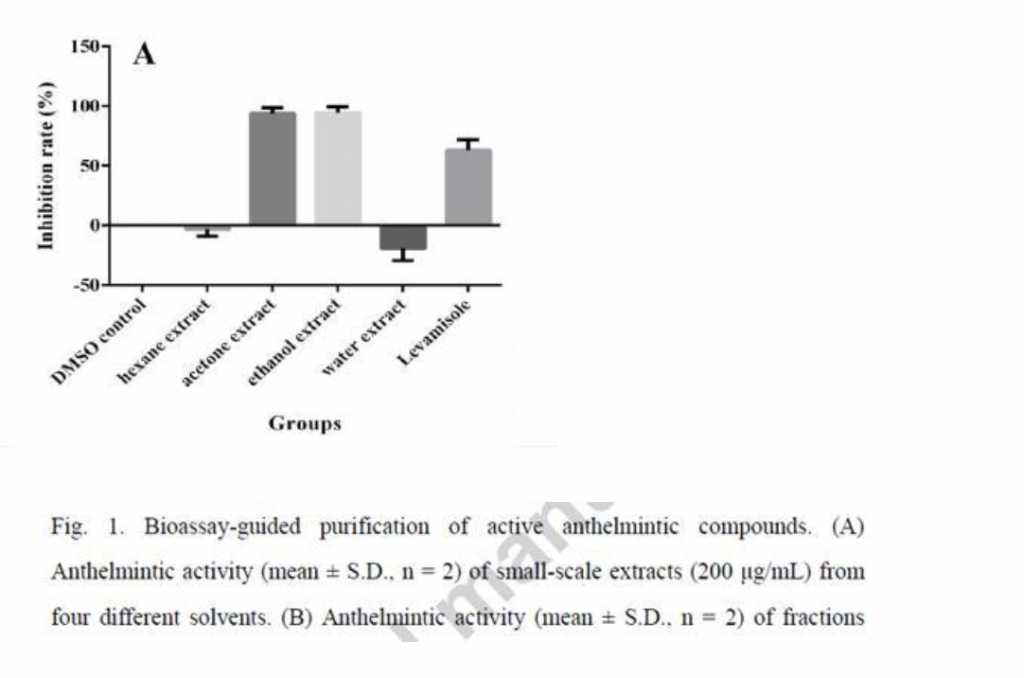
Medicinal plants have been used traditionally to treat intestinal parasites. However, the anthelmintic compounds in most of these medicinal plants have not yet been identified. For example, the seeds of Torreya grandis Fortune, known as Semen Torreyae, are used to treat parasitic diseases in China. In this work, the objective will be to identify which compounds with anti-helminthic activity are present in extract samples.
Materials And Methods:
The anthelmintic assay was carried out in a 96-well microplate. Freshly cultivated young adult worms were collected in M9 buffer and adjusted to approximately 3000 larvae/mL. Then, 15 μL of this suspension (containing approximately 45 larvae) was added to each well of a 96-well microplate containing 184 μL of E. coli OP50 culture (O.D. 600 = 0.5). Subsequently, 1 μL of test sample (stock solution or dilution thereof in DMSO at different concentrations) was added to each well; DMSO (1 μL) was used in a separate well as a solvent control, and levamisole as a positive control. After mixing, the 96-well microplate was placed into a WMicrotracker apparatus and incubated for 16 h at 20 °C. The movement of the worms in each well was measured every 30 min and the percentage of the average movement over 16 h of treated worms was registered. The same method was used to test the activity of active compounds on a panel of drug-resistant mutant strains and transient receptor potential (TRP)-channel mutant strains of C. elegans.
Results:
The quantitative data collected by the WMicrotracker system can easily be used for the potency evaluation of plant extracts and active compounds.The ethanol and acetone extracts have significant anthelmintic activity against C.elegans, with the former showing the most potent activity (Fig. 1A). The strong effects elicited by crude extracts of Semen Torreyae further validate its ethnobotanical use as an anthelmintic in China. The ethanol extract of Semen Torreyae was selected for subsequent large-scale extraction and bioassay-guided isolation of the active compounds.
J Ethnopharmacol. 2018 Oct 5;224:421-428. doi: 10.1016/j.jep.2018.06.026. Epub 2018 Jun 19.
Liu M, Veryser C, Lu JG, Wenseleers T, De Borggraeve WM, Jiang ZH, Luyten W.

